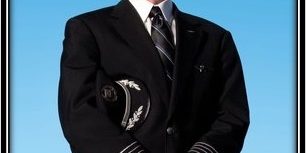Sully’s “Miracle on the Hudson”
Contributor: Barry Fetzer
Sources: History.com

US Airways Flight 1549/Airbus A320 in the Hudson. Photo Credit: Chris McGrath/Getty Images.
Fifteen years ago? Is it possible this iconic aviation example of “calmness under fire” happened 15 years ago? Our eldest grandsons are 15 years old. They don’t know about the “Miracle on the Hudson” any more then they know about Eddie Rickenbacker’s example of calmness under fire in aerial combat in WWI.
That’s the “thing” (at least it’s one of the “things”) about history: it’s quickly subsumed by “new history”…history that has more relevance to us personally because it happened during our cognizant years. Rickenbacker and Sully happened so many years ago (at least from our grandsons’ perspectives)—in Sully’s case the year they were born—that his “calmness under fire” means little to them.
If it means anything.
That is, unless they study these two men to gain insights into their accomplishments. Which the reality is, they probably won’t. And that’s not being critical of our grandsons. It’s just reality that old history is subsumed by new history.
Even for we aviation history enthusiasts, old history is subsumed by new history…history that we, ourselves, have lived.
Raise your hand if you knew Eddie Rickenbacker survived being lost at sea for nearly a month, having ditched in the Pacific in a fuel-exhausted B-17 during WWII? If your hand is up, good on ‘ya!
My hand is not up by the way. While I knew and know about Rickenbacker’s status as an WWI ace and a recipient of the Medal of Honor, I did not know about his being lost at sea…this “detail” of Rickenbacker’s “calmness under fire”…until doing a bit of research for this aviation history vignette.
Likewise, our grandsons likely know nothing about Rickenbacker…or Sully…until, that is, I tell them about them😊. I’m going to write them a letter about Rickenbacker and Sully. Talk about history! A handwritten letter? Letter writing has been subsumed by texts! Well, if I were to be totally honest, in actuality I’ll probably type them a letter. They can’t read cursive—I call it the “old persons’ secret code”—(because they’re not teaching it in their schools) and hand “printing” a letter is too difficult when one (like me) is accustomed to writing in cursive.
Anyway, I digress. On this day (January 15) in 2009 (YES! Fifteen years ago!), according to History.com, “A potential disaster turns into a heroic display of skill and composure when Captain Chesley Burnett Sullenberger III safely lands the plane he was piloting on New York City’s Hudson River after a bird strike caused its engines to fail. David Paterson, governor of New York at the time, dubbed the incident the ‘miracle on the Hudson.’
“Sullenberger, a former fighter pilot with decades of flying experience, received a slew of honors for his actions, including an invitation to Barack Obama’s presidential inauguration and resolutions of praise from the U.S. Congress.
“About a minute after taking off from New York’s La Guardia Airport on January 15, 2009, US Airways Flight 1549 collided with one of the aviation industry’s most threatening foes: a flock of geese. Crippled by the bird strike, both engines lost power and went quiet, forcing Captain Sullenberger to make an emergency landing. When air traffic controllers instructed the seasoned pilot to head for nearby Teterboro Airport, he calmly informed them that he was ‘unable’ to reach a runway. ‘We’re gonna be in the Hudson,’ he said simply, and then told the 150 terrified passengers and five crew members on board to brace for impact.
“Ninety seconds later, Sullenberger glided the Airbus A320 over the George Washington Bridge and onto the chilly surface of the Hudson River, where it splashed down midway between Manhattan and New Jersey. As flight attendants ushered passengers into life jackets, through emergency exits and onto the waterlogged wings of the bobbing jet, a flotilla of commuter ferries, sightseeing boats and rescue vessels hastened to the scene. One survivor suffered two broken legs and others were treated for minor injuries or hypothermia, but no fatalities occurred. After walking up and down the aisle twice to ensure a complete evacuation, Sullenberger was the last to leave the sinking plane.

Courtesy of prnewswire.com
“In October 2009, the now-famous pilot, known to his friends as ‘Sully,’ published a book about his childhood, military background and career entitled ‘Highest Duty: My Search for What Really Matters.’ He retired from US Airways after 30 years in the airline industry on March 3, 2010, and has since devoted his time to consulting, public speaking and advocating for aviation safety.”







